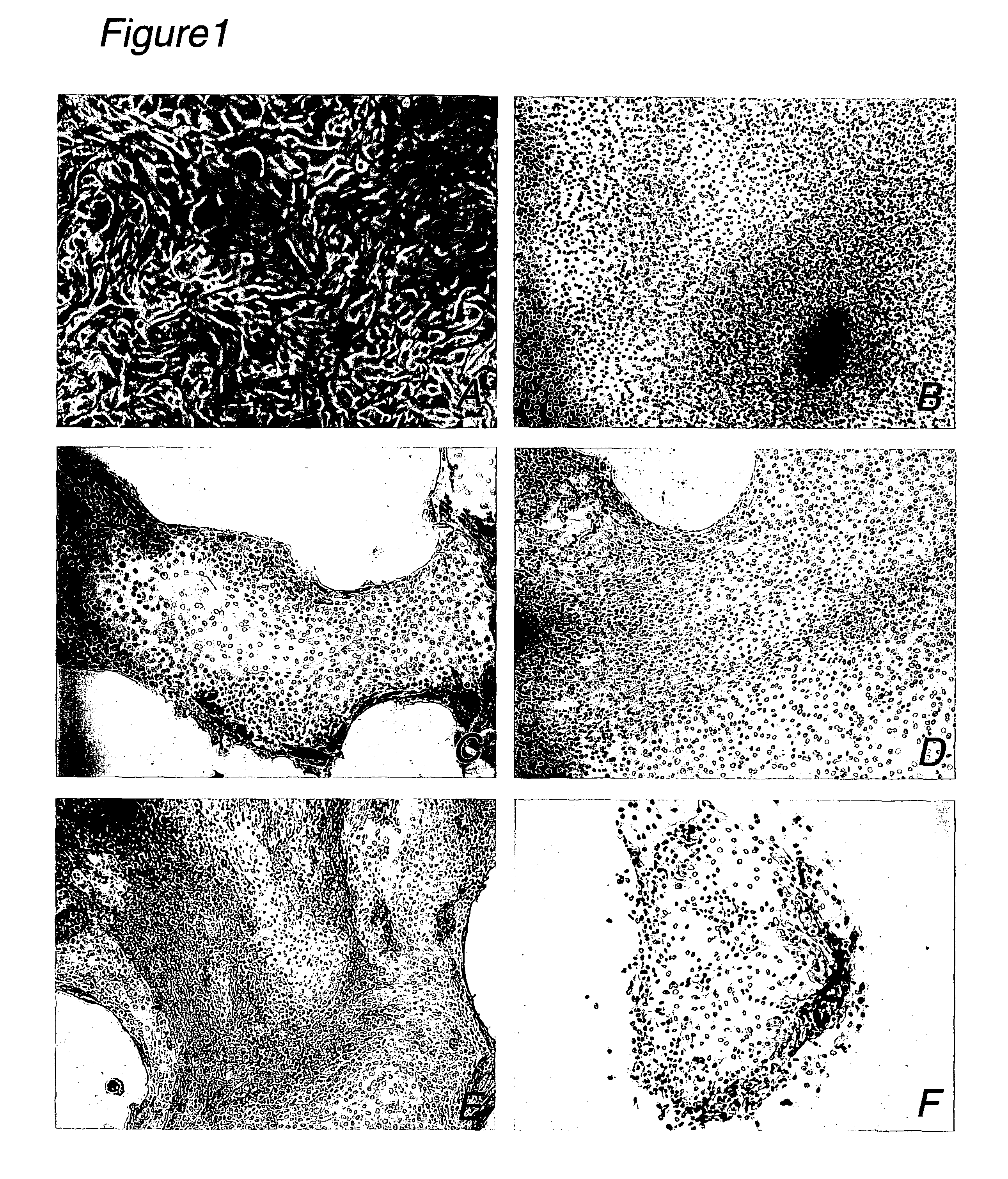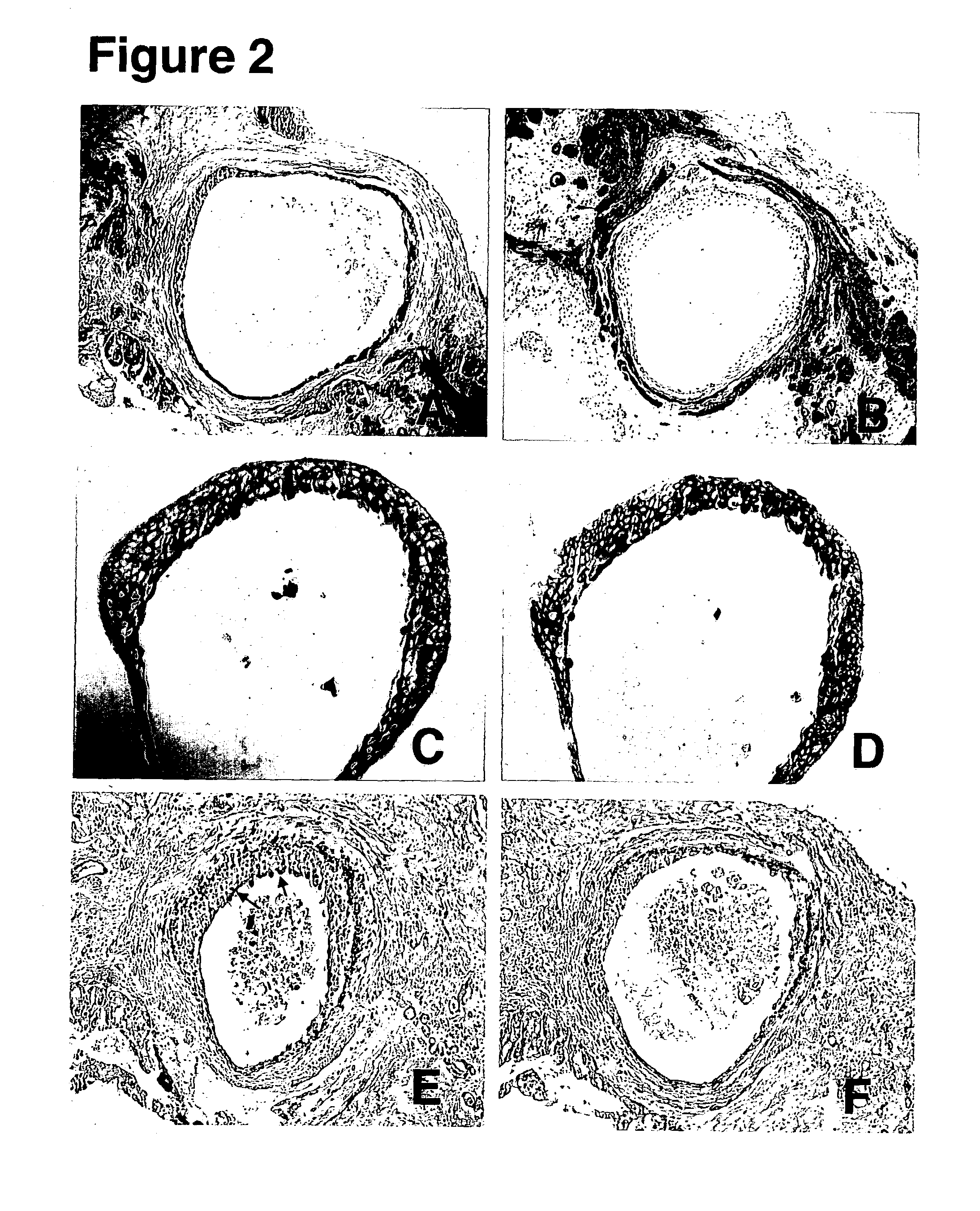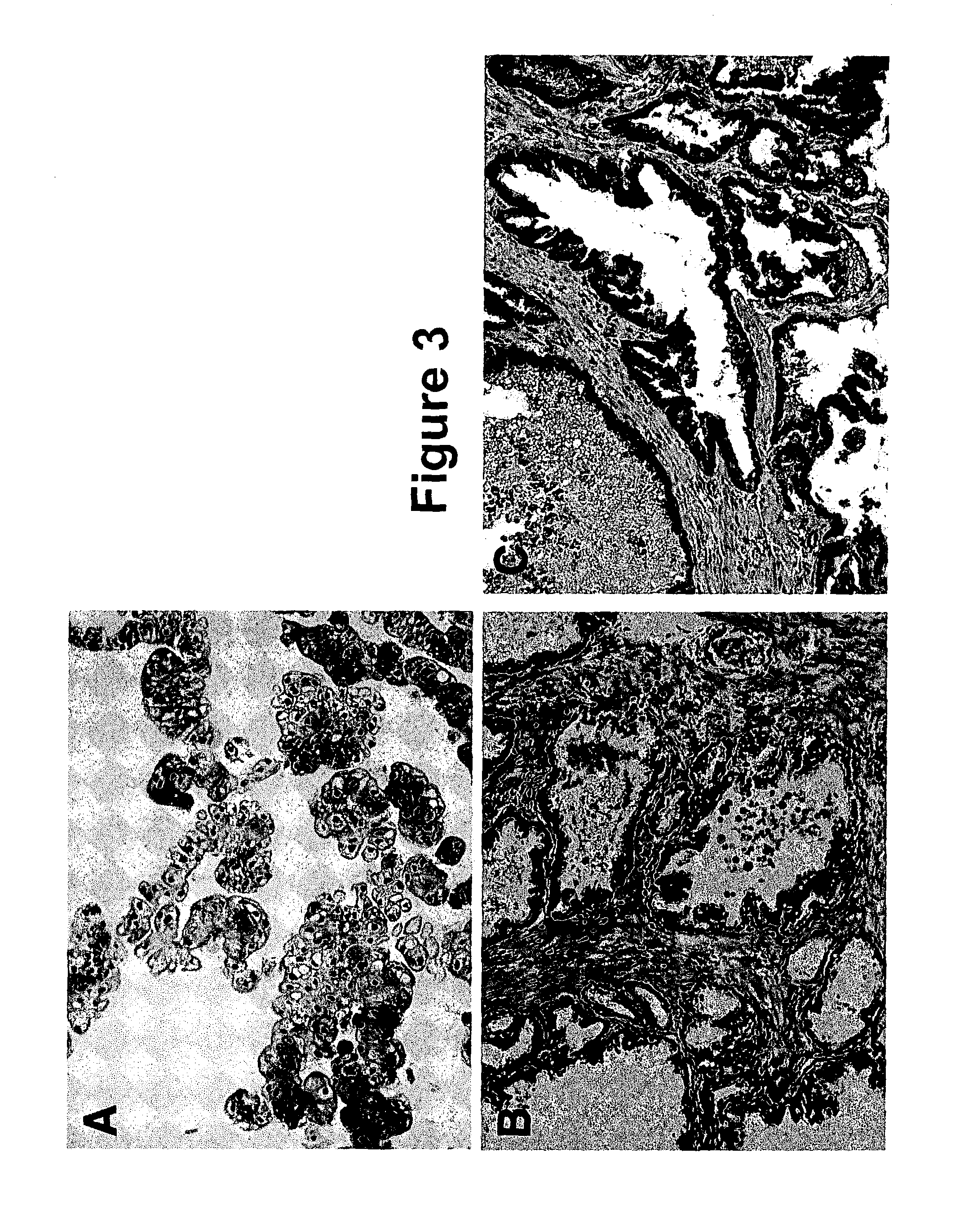Human fetal bladder-derived epithelial cells
a human fetal bladder and epithelial cell technology, applied in the field of development biology and cell biology, can solve the problems of occupational exposure, arylamine exposure, and rare surgery to palliate symptoms in patients
- Summary
- Abstract
- Description
- Claims
- Application Information
AI Technical Summary
Benefits of technology
Problems solved by technology
Method used
Image
Examples
example 1
Isolation of Fetal Urinary Bladder-Derived Epithelial Cells
[0083]Human fetal bladder tissue, gestational age from 14-21 weeks, was obtained from Advanced Bioscience Research at Alameda, Calif. As soon as the tissues arrived, they were rinsed three times with 20 ml of cool PBS. The bladders were cleaned of excess connective tissue, rinsed an additional two times with cool PBS, then cut into small segments (approximately 1 mm mince) with a razor blade or a pair of scissors under dissecting a microscope.
[0084]The minced tissue was suspended in 10 ml of OPTI-MEM® (Invitrogen Life Technologies), then transferred into a 15 ml centrifuge tube using a plastic pipette which had been pre-coated with bovine serum albumin to minimize tissue binding to the walls of the pipet. The minced tissue was centrifuged at 1000 rpm for 5 minutes in Heraeus Megafuge 2.0 (Cat#75003485) to pellet the minced tissue. The supernatant was aspirated and the pellet resuspended in 6 ml of fresh OPTI-MEM®.
[0085]The t...
example 2
Immunohistochemical Characterization
[0088]Monolayers of fetal urinary bladder-derived epithelial cells cultured in four-well chamber slides were washed three times with cool PBS and fixed with 100% reagent alcohol at −20° C. for 5 minutes. Then, the fixed slides were air dried overnight. The cells were incubated sequentially in blocking buffer (5% goat serum in PBS) for about 1 hour, in primary antibodies for overnight, and in peroxidase-conjugated affinipure F(ab)2 fragment of goat anti-mouse IgG+IgM(H+L) for about 1 hour. The cells were washed three times with PBS for 5 minutes per wash between those steps. The primary antibodies used were cytokeratins 7 and 19, uroplakin III, and alpha-actin at the dilution recommended by the supplier. To visualize staining of cells by the antibodies, the fetal urinary bladder-derived epithelial cells were incubated in peroxidase substrate DAB / H2O2 prepared from Sigma.
[0089]Some cells were positive for uroplakin III and cytokeratins 7 and 19. Tho...
example 3
Detection of Fetal Bladder Cell Molecular Marker H19 Imprinted Gene mRNA
[0090]H19 imprinted gene mRNA has been characterized as a marker specifically expressed in fetal human bladder cells but not expressed in normal human adult bladder cells (Elkin et al., 1995, FEBS Lett. 374(1):57-61; Cooper et al., 1996, J. Urol. 155(6):2120-27). To detect H19 mRNA, replicate fetal bladder-derived epithelial cell cultures of passage 2, approximately 105 cells each, were extracted for total RNA with RNeasy kit (Cat#74104) purchased from Qiagen according to the protocol provided by the supplier. The final total RNA was eluted in 50 μl water for each sample. The total RNA, 9.5 μl for each sample, was reverse transcribed into first strand cDNA in a 20 μl reaction with a cDNA synthesizing kit (Promega Corporation Cat A3500) with random primer according to the protocol provided by the supplier. PCR reactions were set up as following with high fidelity PCR master mix manufactured by Roche Biochemical (...
PUM
| Property | Measurement | Unit |
|---|---|---|
| Time | aaaaa | aaaaa |
| Volume | aaaaa | aaaaa |
Abstract
Description
Claims
Application Information
 Login to View More
Login to View More - R&D
- Intellectual Property
- Life Sciences
- Materials
- Tech Scout
- Unparalleled Data Quality
- Higher Quality Content
- 60% Fewer Hallucinations
Browse by: Latest US Patents, China's latest patents, Technical Efficacy Thesaurus, Application Domain, Technology Topic, Popular Technical Reports.
© 2025 PatSnap. All rights reserved.Legal|Privacy policy|Modern Slavery Act Transparency Statement|Sitemap|About US| Contact US: help@patsnap.com



